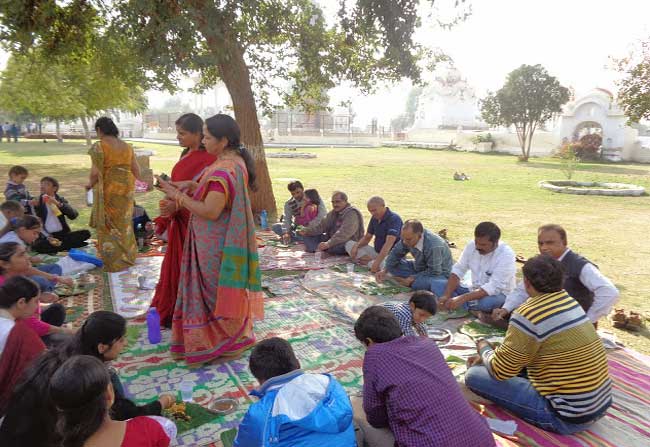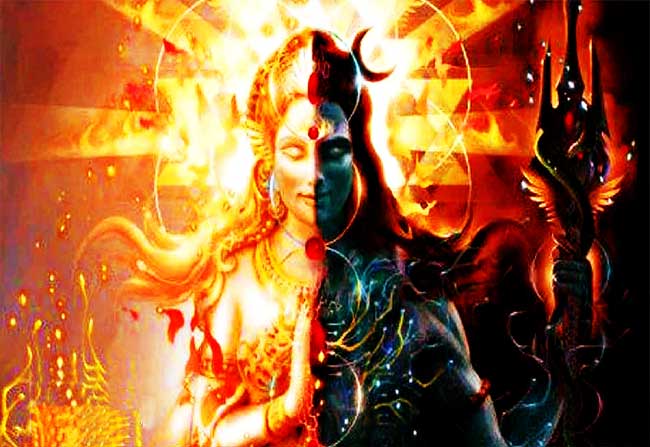Significance of ‘Kartika Masa Vana Bhojanam’
‘Kartika Damodara masa’ is the month of Lord Vishnu and Lord Shiva, where devotees throng the temples in the worship of their deity. Offering prayers and chanting the divine names of Vishnu and Shiva is considered auspicious in this divine month.
First of all, we need to understand the Significance of Kartika Vana Bhojanam. Why should we celebrate it?
It is very important to celebrate Vana Bhojanam or Kartika Vana Bhojanam.‘Vanam’ means loving Mother Nature, the forest. This is explained in detail in Amarakosam. People raise the question of why we should go to the forest and eat food over there with our families. It is a kind of annual ritual, a picnic undertaken in Andhra Pradesh in the month of Kartika Masam.
As per Hindu traditions, Trees/plants play a pivotal role on mother earth as they serve ‘SamasthaJeevaRaasulu’ all life including human beings in many ways. Our ancestors conceived Nature as God and always treated it with respect. It’s said, ‘Vruksho Rakshati Rakshitaha’, meaning, ‘One who protects the trees, is protected’. Amla(Gooseberry) a savior to humanity is worshipped and also has got immense medicinal values/benefits. Eating this fruit helps in gaining immunity and keeps illness at a distance.
It is believed that Lord Vishnu and Goddess Lakshmi prefer to reside under Amla trees during the Kartika parvam (month). This is the reason why people during the month of Kartika light the lamps with cow ghee and place them around the Amla tree, and worship. Telugu people especially, offer prayers to Lord Vishnu and recite the Vishnu Purana and Kartika Purana during the VanaMahostavamrituals. Apart from Amla tree, tulsi, bilva, and durva are considered divine and offered pujas.
 Traditionally people cook food under the Amla tree, and after offering prayers consume the food as prasadam. The sight of an Amla plant was a common thing in the backyard of every house. In the ancient times, Vanabhojam’s foremost intention was ‘Satkalakshepam’, spending time worshiping ‘suras’ (deities), in a righteous and noble manner. These outings were mainly dedicated to ‘Purana Parayanam’ i.e. reading the Holy Scriptures, an activity observed for concentration, dedication and contemplation of the individual soul to God.
Traditionally people cook food under the Amla tree, and after offering prayers consume the food as prasadam. The sight of an Amla plant was a common thing in the backyard of every house. In the ancient times, Vanabhojam’s foremost intention was ‘Satkalakshepam’, spending time worshiping ‘suras’ (deities), in a righteous and noble manner. These outings were mainly dedicated to ‘Purana Parayanam’ i.e. reading the Holy Scriptures, an activity observed for concentration, dedication and contemplation of the individual soul to God.
In the current generation, this auspicious festival tradition has been masked with remorseful activities and conducts. The noble practice has been mutated into a ‘Chaturmukha Parayanam’, where people indulge themselves playing the game of cards and gambling. While few sections of the society treat it as holiday gathering and end it with the consumption of alcohol. Few organizations do make families, office staff and friends a part of this tradition. They perform the Pooja, and carry dining activities in the garden, which usually seems more like a ‘weekend outing’.
Though we have understood the real meaning of Kartika Masam, and the importance of Vana Bhojanam, the real challenge is educating the current society, which holds the function, but without any values to it. The festival has become a platform for people to showcase their talents than recognizing their inner self, thereby overshadowing the real purpose of gathering.
Kartika Vanabhojana Katha:
On this auspicious month, we talk and discuss a lot about Lord Vishnu and Vana Bhojanam. Taking this as an opportunity, I would like to tell you all dear readers a small story about Kartika Vana Bhojana!
Due to Kartika Masam, many families residing in cities held a gathering for Vana Bhojanalu. They were deeply engrossed in recollecting and discussing past happenings in their life. They were also talking about new developments in the present society.Though these platforms get people together, individuals use these gatherings to assert their talents and prove themselves. Due to this reason, the real essence of coming together is lost behind dark clouds. If we wish to bring awareness, change, and positivity in our children, we should share this story with them. If not everyone, at least a few might change their course and move towards good and follow righteousness.
Kartika MasamVanabhojanam welcomes one and all. Dips in holy rivers, lighting the lamps, chanting ‘Om Namah Shivaaya’ and singing bhajans of Bhagawan are a common practice throughout the Kartika Masam, and they signify the devotion of the devotee towards the Lord. The festival brings an occasion for everyone to come together. Villages often associate themselves with mythology, drawing people to celebrate the festival. The Kartika Masam Vanabhojanam festival deepens the bonding between the villages and the rest of the nation.
What is this story all about? To know, Let us read further.
We all know, Lord Shiva is the Supreme form. Gods, rishis, and maharishis, and every soul in this universe prostrate at the feet of Lord Shiva. People wait for yugas, just to get a mere glimpse of the God. Even “Bhola Shankar” as the name goes by, is an innocent Shivayya who is always waiting and ready to bless his devotees with whatever they wish or desire. Unlike Lord Vishnu who resides in ‘Pala Samudra’, Lord Shiva resides in the ‘Bhakti Samudra’ and treats all his creation with equality. The Nagendra (Snake God) who has decorated himself with garland to Lord Shiva is watching all of this from yugas. It observed, all the devotees who are coming to Kailasa to have Darshan of Shivayya, are particularly watching him too.
 He got confused, thinking whether they are all offering their salutations to him or to Lord Shiva. It slowly developed ego (Aham). His thoughts became narrow, making him negative. The snake thought people are so foolish to wait for years together to get a glimpse of the Lord.It thought, having embellished the Lord for so many ages now, it must be greater than the God.
He got confused, thinking whether they are all offering their salutations to him or to Lord Shiva. It slowly developed ego (Aham). His thoughts became narrow, making him negative. The snake thought people are so foolish to wait for years together to get a glimpse of the Lord.It thought, having embellished the Lord for so many ages now, it must be greater than the God.
The Snake thought to leave Lord Shiva and Kailash, and approach the devotees directly. It also thought of blessing and giving salvation to the devotees. Out of its foolishness, the Snake felt that he is the only one who can resolve problems and they have to worship him.The Snake differed to share its respect with Shivayya.
That’s it!!
It left Kailash and Lord Shiva only to find itself in dense forest where it found a sage in deep meditation. On seeing the snake, the sage humbly offered his prayers. The snake was happy and moved forward, only to find a traveler on the way. The traveler got scared seeing the snake and ran for his life. The snake’s ego raised and went ahead. It found a group of people cutting wood, on seeing the snake they all stopped working and looked at it. They signaled each other, and within seconds they started running towards the snake with an axe to kill it. Realizing what is happening to him, it started moving swiftly to save its life.
At last, the snake realized the gravity of his mistake and his position. It went back to Lord Shiva in a remorseful state asking for Lord’s forgiveness. “Neelakanta” also known as Lord Shiva, graced the snake with a smile and he soon not only witnessed but also realized the greatness of the God.
I hope the readers, especially young children must have understood that only Lord Shiva is our root, our home, our abode and that snake is none other than every one of us, our mind. Just like the God graced the realized snake, we should remember our villages grace us with the same kind of love.
Let’s now pledge that we will respect, worship and develop our villages. Let us all come together to preserve our rich culture, heritage, and traditional values which not only bind us but also bring unity in diversity. Probably, my reader must have come here to read a lighter article, but I am sure you will be leaving the page with more knowledge.
Om Namah Shivayah!!

